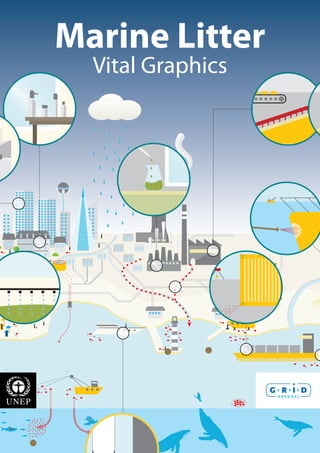This document defines marine litter as any waste created by humans that has entered the ocean environment. Plastics make up 60-90% of marine litter. Plastic pollution is a major problem because plastics do not biodegrade and can persist in oceans for centuries, accumulating in habitats and entering food chains. Marine litter comes in all sizes, from large objects like fishing gear to microplastics smaller than 5mm that are difficult to monitor due to their small size. More research is needed to understand microplastics' impacts on ecosystems and human health.



























































